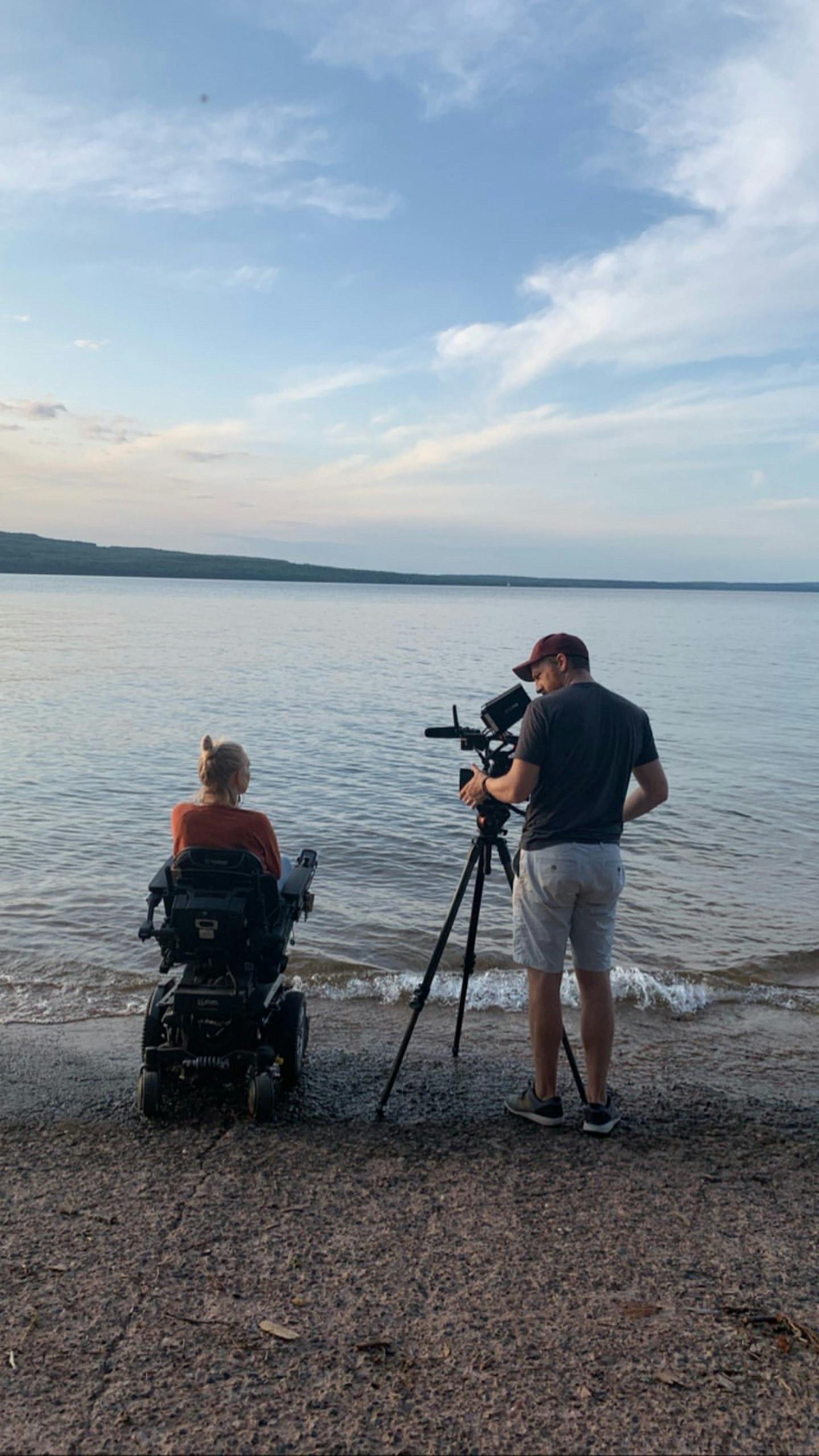 See
more of the story
See
more of the story
Editor's note: Minnesota native Kelsey Peterson's documentary, "Move Me," makes its television premiere on PBS' "Independent Lens" at 9 p.m. Monday on TPT, Ch. 2. It will stream for a month afterward on the PBS video app. This column has been updated.
All of the ways by which Kelsey Peterson defined herself crumbled the moment she decided to dive into Lake Superior.
At the time, Peterson was a 27-year-old dancer and yoga teacher who regarded herself as sexy, sensual, confident and strong.
"My whole life, for so long, was about what I could do with my body," Peterson told me. "One split second takes all that away."
Peterson, who grew up in the Twin Cities and along Bay Lake in Crow Wing County, had been boating with friends on the July 4th holiday in 2012 near Madeline Island in Wisconsin. She was literally intoxicated — and intoxicated with the still water beckoning her to jump. She dove into a shallow part, hitting the sand 3 feet below and breaking her neck in three places. The injury left her paralyzed from the chest down.
Her journey as she travels from a place of hope for a total cure toward a more balanced state of self-acceptance is the heart of "Move Me," a new documentary Peterson co-directed with Daniel Klein. The movie was shown this summer at the Minneapolis St. Paul International Film Festival.
Sometimes we may cling too tightly to pieces of ourselves, deluded by the notion that those pieces — our careers, our marriages, our status, our athleticism, our youth, our wealth — are part and parcel of our identity. Peterson learned firsthand how dangerous that is.
"The things that define us, we can lose them," she said. "And then they can confine us, because we can try so hard to hold onto something that isn't."
Her documentary, which began filming five years ago, blisters in honesty about what Peterson yearns for her body to do.
"I don't want to just f—ing walk," a frustrated Peterson tells her mom as she wipes away tears. "I want to f—ing dance."
Not just walk and dance, but shower. Dress. Toilet. Experience an orgasm. The film lifts the curtain on the most intimate challenges faced by Peterson and others who've lost the ability to move and feel.
"What's hidden about disability, but spinal cord injuries in particular, is all the stuff you don't see," said Gabriel Rodreick, a musician who appears in the film and collaborated with Peterson on "A Cripple's Dance," a live music and dance performance. "We lose bladder function, bowel function and sexual function. It's not just we can't walk. It's a whole host of other things we have to figure out and adapt to and struggle with."
Rodreick says too often narratives about disability steer toward what's known as "inspiration porn," a term coined by the late Australian disability activist Stella Young. It may objectify and pity disabled people, or hero-worship them, only to make able-bodied people feel better about themselves.
"I don't think we see and hear enough honest stories about disability that encapsulate the whole thing," Rodreick said, but he believes Peterson is shining a light on aspects often considered taboo. "We need more of that story."
Much of the film's plot is driven by Peterson's exploration into therapies and a cutting-edge clinical trial that implants a stimulation device into the patient's spine in hopes of helping them regain some day-to-day life functions.
The first-time filmmaker doesn't shy away from one of her wishes — to be able to experience sexual pleasure again.
It was important as a woman and as a person with a disability to share that truth, hopefully giving others permission to be free with their sexual side, Peterson said. In the past couple of years, she's been kinder to herself and has begun exploring her sensuality again.
"The thing with disability, we're desexualized. When you're desexualized, it's dehumanizing," she said.
Peterson admits she's still working through some "deep-seated ableism" that is slowly and uncomfortably revealing itself. Most able-bodied people aren't aware how much they identify with their bodies and how it dictates their feelings about themselves, she said.
Dancing was always Peterson's mode of self-expression. She was the kid who lugged her boom box to school, blasting Ace of Base and insisting that her friends dance to all of her choreographed moves. She graduated from high school at the Perpich Center for Arts Education in Golden Valley and majored in dance at the University of Montana.
After she became injured, Peterson resisted identifying herself as someone with a disability. And once she finally did, she felt at times like an "impostor" because she did not fully grasp what being disabled meant. She's now finding her voice as a proud member of the community, a place where she feels understood.
Peterson has fought to channel her creativity in other ways — filmmaking, dancing and choreographing from a wheelchair — and learning to let go what she can. She even moved back to Madeline Island, the place of her accident, and has redefined her relationship with the lake.
"It's so important to surrender to the flow of life," she told me, "and to lean into our powers of adaptation as human beings."
Adapt, twist, balance, surrender. These are things a dancer innately knows, and I'm grateful Peterson can teach us how to find grace through it all.








